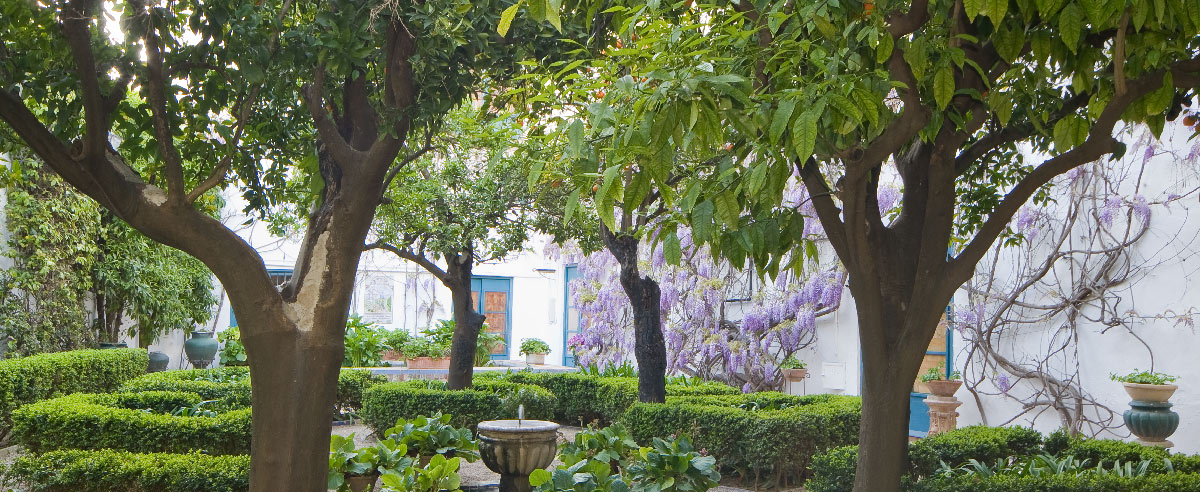


COURTYARD OF THE ORANGE TREES
- 0
-
957496741
-
www.palaciodeviana.com/
Part of the original centre of the palace in the 15th century, it was the entrance to the building until the construction of the Reception Courtyard. It reminds us of a Hispanic-Muslim garden due to its layout, closed off to the outside world and with an intimate atmosphere, the important role of water and the combination of flowers and fruit trees. In the plans dating from the 19th century, this courtyard appeared to be divided into two. One part containing the pool, was given many names over time, including like Courtyard of the Fountain, Drinking Courtyard and Courtyard of the Vine. The other part contains the hundred-year-old orange trees that give it its current name. It had also been known as the Courtyard of the Dining Rooms, after the rooms that look out onto it. We know that during the time of the most recent Marquises of Viana (20th century) there was no dividing wall and it had once again returned to its original design, which is how we see it today, reflecting the spirit of the Muslim orchard garden. For Muslims, the garden was a private area, not visible from the outside, that invited contemplation. Plants and water were used as the main decorative elements in Muslim courtyards and gardens. This makes sense given that their cultures are often from arid areas. It makes sense coming from cultures from arid areas. They recreated the appearance of an oasis in the middle of the desert through the use of water and plants. Special attention was paid to water, considered in the Koran as “divine mercy”. In the Andalusian world, in addition to having an aesthetic role, courtyards also had an agricultural use, with advanced techniques for water use and the acclimatisation of new botanical species. The Muslim courtyard, with its private, looking inward nature, was a key element in the historical evolution of the Cordoban courtyard. The air of tranquillity and intimacy, the extensive use of water and the presence of fruit trees, in this case hundred-year-old orange trees, is what brings to mind the spirit of the Hispanic-Muslim garden. The Courtyard of the Orange Trees, in short, this is a peaceful area in which to take a stroll and allow yourself to be led by your senses: the smell of the plants, the tinkling of the water, the slight crunch of the gravel flooring, the view of the exuberant plants in bloom…. Through this sensory experience we can better understand the effect that the Muslims sought to create in their gardens: introspection, communion with the divine and tranquillity of the spirit through the contemplation of nature. The playful Marquis The heliotrope flower is famous for its flowers and their intense vanilla perfume. It is said that the last Marquis of Viana came to this courtyard each morning to pick one of these flowers and place it in the buttonhole of his jacket. The ambassadors of Córdoba Córdoba is so closely identified with the orange tree that in 1958 the City Council sent an embossed leather chest, typical of Cordoban handicrafts, along with some seeds and a message to the Temple of Peace in Hiroshima: “Seeds from the orange trees in the Mosque, sent to Hiroshima on a mission to create love, peace……, to grow there where there was so much death. On flowering, offer your perfume to God, asking for intelligence among men”.
More information:
Rate us and Write a Review
Address: Plaza de Don Gome, 2 14001 Córdoba Phone.: (34) 957 496741 info@palaciodeviana.com www.palaciodeviana.com

0 Reviews